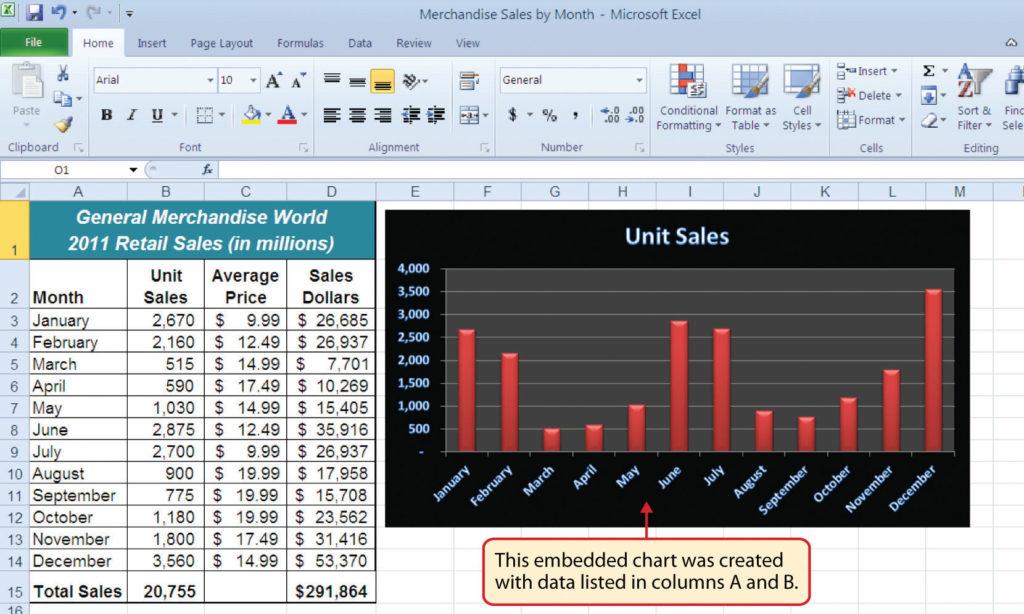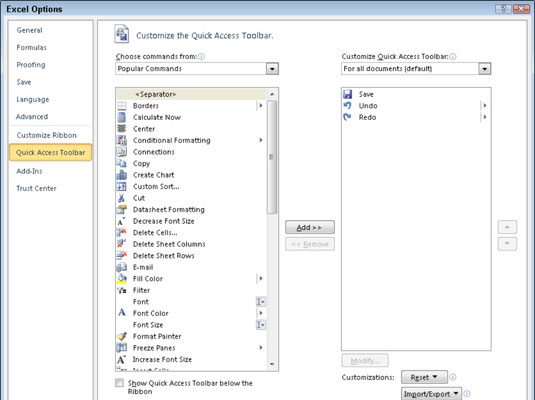

In the Multiple data set example, I didn't use sparklines because they don't show the scale of the vertical axis. If you are doing this yourself, make sure to choose the option "Same for All Sparklines" in the Vertical Axis options for both the Minimum and Maximum values. To make sure that all the sparklines use the same vertical axis scaling in the 4-year example, the entire range of averages spanning all 4 years is a single sparkline range. To prevent the values in these cells from being displayed over the top of the sparkline, I used a custom number format of " ". The source and location for the sparkline are the 7 cells containing these averages. The cells that display the sparkline use a formula to calculate the AVERAGE of the values for each separate day of the week. In the 4-Year and 1-Year worksheets, these are column sparklines, a feature introduced in Excel 2010. How are the bar graphs above the calendar chart created? Go to Home > Conditional Formatting > Manage Rules to see what I mean by the "Applies To" range. These cells need to be included in the "Applies To" range if you are defining your own rules. To provide a scale, the top of the 4-year heat map example contain cells that calculate the maximum, minimum, median, and average from the values displayed in the calendar. Why are colors for the Summary Stats in the 4-year example not changing color when I define my own conditional formatting rule? Want to see the numbers? Select a cell and press CTRL+~ to quickly change the format to the General format. For anything other than small integers, numbers don't fit within the small space, so I used a custom number format of " " so that the cells do not display anything. The numbers ARE there, but I'm just using a formatting trick to prevent them from being displayed. In the 4-Year heat map example, why aren't the cells displaying numbers? In my opinion, you can see the correlation between the data sets more easily using the line charts. In contrast, the line chart below shows the 7-day moving averages for this same sample data. Can you see the correlation between the side-by-side heat maps? Maybe. In the example above, I purposefully designed Sample 3 and Sample 4 to have a high degree of correlation: CORREL(AU21:BA73,BM21:BS73)=0.65. Correlation Between Data SetsĬompared to line charts, correlation between data sets may not be as easy to see with side-by-side heat maps. Seeing the same data presented in multiple ways may help you figure out what you like best. One thing you can do with the side-by-side heat maps is analyze the same data set using different color gradients. I'm a fan of using percentiles for color gradients so that outliers don't skew the gradient too much. The other 3 charts use the 90th percentile for the darkest color and the Minimum value for the white color. In the above example, the first chart uses the Max and Min for the color gradient. The summary stats section at the top includes the 90th and 10th percentiles to help you decide how you want to adjust heat map scaling. The values are displayed by looking up the value from the Data worksheet that corresponds to the date in the reference calendar on the left. These values are stored in a separate Data worksheet, as shown in the image below. The calendar chart in the middle shows the values for each date. The important point is that these cells contain real date values so that they can be used in lookup functions and conditional formatting rules. On the left side is a regular calendar, with each of the cells containing date values that are just formatted to display the day only. If you unhide all of the columns in the 4-Year worksheet, you'll find that the above example was created using the same approach. However, I will explain a few things.įirst, take a look at the 1-Year worksheet.

#Insert current date in excel 2010 chart how to#
I'm not going to explain step-by-step how to create a heat map in Excel, because you can download the template and figure out how it works. Analyzing web metrics specific to a certain geography would probably show similar trends - where low traffic days correspond to that country's non-working days. If you look even closer, you can see some low points on days like July 4th, Christmas, and Thanksgiving - some of the common non-working days in the United States. Sunday and Saturday are the low traffic days. In this chart you can easily see a correlation to the day of the week.


 0 kommentar(er)
0 kommentar(er)
